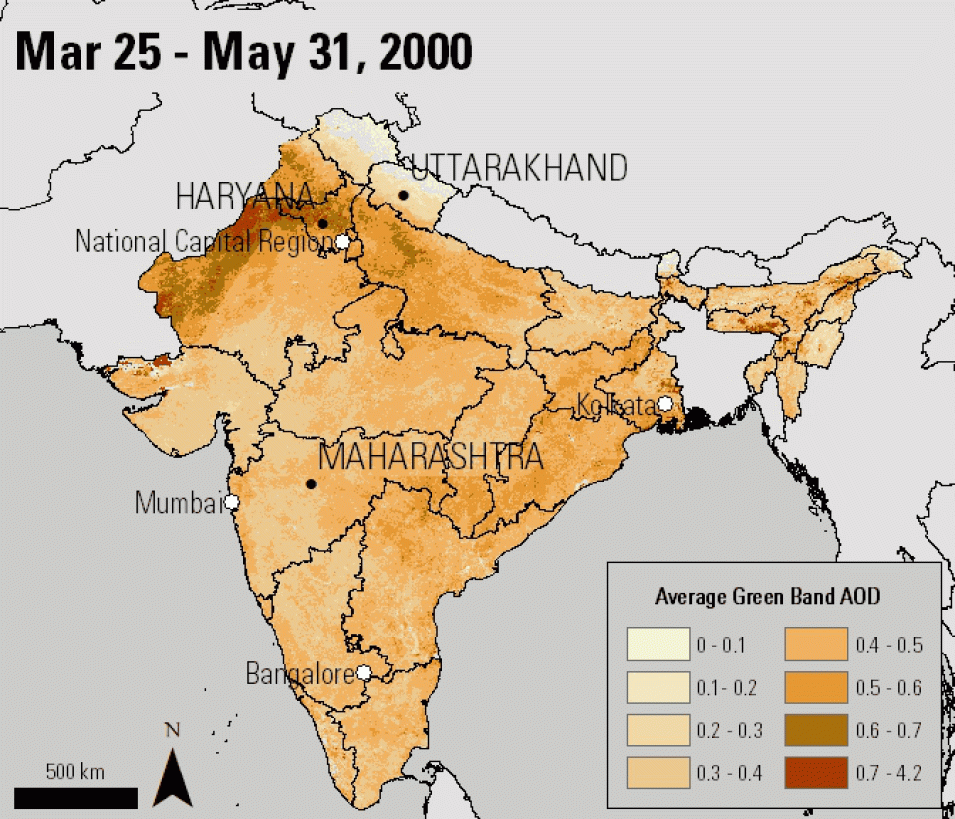Introduction
The Severe Acute Respiratory Syndrome-COronaVIrus Diseases 2019 (known as SARS-COVID-19 or SARS-CoV-2) has greatly endangered human health and impacted economic growth globally. India has experienced its highest rates of COVID-19 transmissions in densely populated regions. Over the course of the pandemic, the government of India has ordered several nationwide multi-phased lockdowns as well as travel bans, social distancing measures, and quarantines to help prevent the spread of the virus. These regulatory measures also led to a reduced human impact on the environment, yielding a noticeable decrease in the amount of emissions and pollutants released to the atmosphere and an overall improvement in air quality.
Instruments and Techniques Used
Recently, researchers from the Department of Mining Engineering at the National Institute of Technology in Rourkela, India, used daily 1 kilometer (km) Combined Terra and Aqua Moderate Resolution Imaging Spectroradiometer (MODIS) Land Aerosol Optical Depth (AOD) (MCD19A2) data from 2000 to 2020 to assess the impact of the pandemic-triggered lockdowns on the AOD level as an indicator of air pollution. To better understand the impact of human activities on the aerosol level, the authors investigated the AOD in four major cities in India as well as ten coal mining regions. A total of four lockdown phases were implemented between March 25 and May 31, 2020.
The authors investigated the impact of the first three nationwide lockdowns (March 25 to May 15, 2020) on the spatiotemporal patterns of AOD and compared it with estimated long-term mean AOD for the same time period. The AOD anomaly is calculated using the observed AOD and projected AOD from observations between 2000 and 2019.
Major Findings
The results showed a significant reduction in AOD levels coinciding with the pandemic-imposed lockdowns and which corresponded to a reduction in particulate matter in the air.
An unexplained higher AOD level was observed for a few locations, mostly on the eastern side of India. The maximum increase of 13.7% in AOD is observed in Maharashtra, and the highest decreases of 42.5% and 37.8% are observed in Uttarakhand and Haryana, respectively.
Four metropolitan areas and ten coal mines from different coalfields were investigated in the study. These metropolitan areas are known to have high particulate matter emissions and AOD during previous years, and include National Capital Region (NCR), Kolkata, Mumbai, and Bangalore. Respectively, a reduction of 37%, 17%, 15%, and 6% in AOD anomaly were estimated within a 5 km zone of these cities, meaning the lockdowns had the highest impact on NCR’s air quality.
Furthermore, up to 70% higher AOD anomalies were estimated within 3 km of eight coal mines (out of ten selected coal mines). Coal-based electricity is the main source of power generation in India. Most of the coal mines continued to operate during the lockdown periods. Moreover, expanding the capacity of the coal mines has increased the emission of air pollutants in recent decades.
The results from this study show a significant reduction in AOD level across India due to pandemic-triggered lockdowns. The study’s authors believe this means that nature is capable of healing itself if people give it the opportunity. They also suggest that the policy makers use innovative ways to implement selective lockdowns to control air pollution while minimizing the impact on the economy.
This study illustrates the importance of remote sensing data such as the Combined Terra and Aqua MODIS AOD product in understanding the impacts humans have on their environment.
Click on the image to view the animation.
